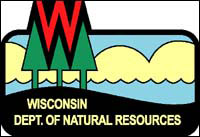
Applicants for some state water-related permits can now use a new online system that state water protection officials say will cut paperwork and deliver quicker, more consistent permit decisions and provide better information to the public about proposed projects.
People can access and register for the online system by searching for “water permit” on the Department of Natural Resources website.
“We see this new system as a win-win for everybody,” says Pam Biersach, who leads the Bureau of Watershed Management. “We think it will allow for quicker and better decisions on permit applications, reduce workload for our staff and ensure projects get a more consistent and comprehensive review to better protect our lakes, rivers and wetlands. It will also be much more transparent for the public, who will be able to follow an application online.”
The online permit system has a number of different parts that are being phased in over the next year. Right now, applicants will find 72 of the nearly 100 water-related permit applications on the same web page for the first time, and applicants for three of the most popular permit types can now fill out their applications online, pay any fees online, and track the progress of their application online.
Three or four more water permits will be added every quarter until all of water-related program permit applications can be handled online, Biersach says.
The three permit types available for online processing at this time are individual permits for wetland and waterway projects; permit applications for wastewater pit trench de-watering, and permit applications for aquatic plant management on private ponds. Last year, DNR received applications for more than 2,000 individual permits for wetland and waterway projects alone. More complicated projects require individually tailored permits instead of the “general permits” that prescribe general standards avoid harming the environment with lower risk projects.
Biersach says the online permit system will enable applicants to not only fill out and pay their permits online, it also will allow the information to be shared with external customers and partners while giving the applicant round-the-clock access to track where the application is in the process.
For proposed projects where law requires that neighbors and others be notified of the proposal, email notifications will automatically be sent to people who sign up for such notifications through a subscription service called GovDelivery. Public notices will still continue to be published in the legal sections of state newspapers.
That automation will decrease workload for DNR staff, as will the online tracking system, which should reduce how long staff spends on the phone updating applicants on their permit status.
“We see a significant savings to DNR staff in time, paper supplies and mailing costs, and think the result will be that staff can focus on high priority work such as reviewing individual permits, which involve more complicated projects with potential for environmental impacts, and inspecting sites afterward to make sure applicants did what they said they’d do to protect lakes and rivers and wetlands,” Biersach said.
Margie Damgaard, the project leader, says the online system has a check-off to assure applicants turn in the necessary pieces information for a complete submittal, something that hasn’t always happened in the past and that has significantly slowed permit review times.
Damgaard says the online system also has programmed in “checks and balances” so that all review steps must be completed before the permit decision is issued. That check will assure that the appropriate staff with information regarding a permit application and its potential impact will be able to provide input, whether that involves pulling in a fisheries or wildlife biologist in addition to the regulatory staff who normally review the permit applications.
This new system will provide better overall protection of natural resources where projects are proposed, will provide more consistent decisions across DNR regions and water-related programs, and will help eliminate duplication of effort by staff.
“We’ve very excited to have this first phase of the permitting system come online and look forward to working with our staff, partners, and applicants to make sure it works well for everybody.”
 Your Privacy Choices
Your Privacy Choices